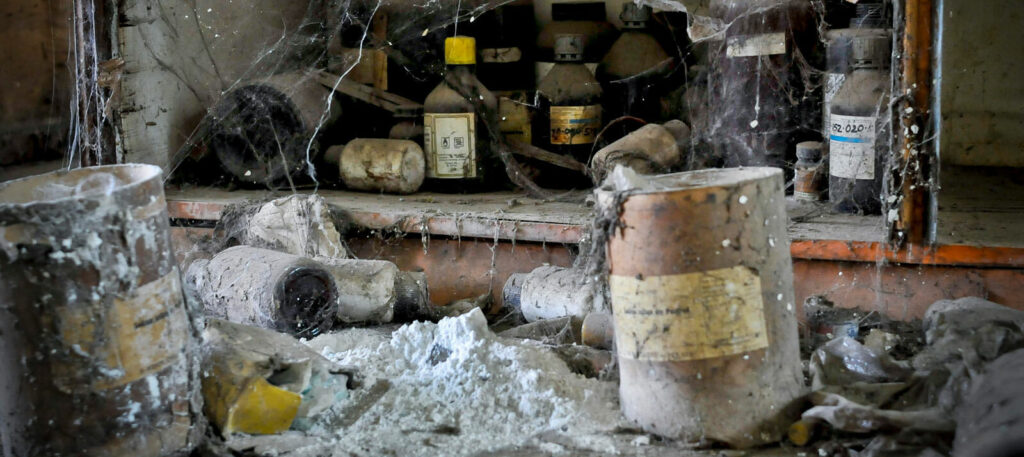
The Bhopal Disaster (1984): A Tragic Legacy of Corporate Negligence and the Toxic Gas Leak That Shook India
As the cold night of December 3, 1984 approached, the city of Bhopal in India was plunged into dark fog of deadly toxic gas escaped from the Union Carbide Corporation pesticide plant which was located on the outskirts of the city. Bhopal incident has become the horrific scene of one of the worst industrial disasters in history, and the aftermath left a profound and lasting impact on the collective memories of the Inhabitants of Bhopal. It turned out to be a textbook example of the catastrophic devastation that can result from corporate negligence.
Background and Context
Following the industrialization in India, the Union Carbide pesticide plant was established in Bhopal in late 1970s, the facility was established to exploit the pesticide market where the demand for Union Carbide’s product Sevin (Carbaryl) was at its peak. Growing Yield of such product meant increasing concerns over safety and environmental issues.
On the other hand reports of leaks, mishaps, and safety-negligence were increasing at the Union Carbide plant, despite these alerts no action was taken by Industrial safety regulators or environmental activists.
But concrete evidence that safety standards were inadequate and poorly enforced was only one small part of the story. The safety systems at Union carbide plant at Bhopal were either obsolete as well as malfunctioning, and its workers were not properly trained in handling such highly toxic chemicals like methyl isocyanate (MIC) — Union Carbide’s enormous storage tanks, one of which was exactly what went off-line when the disaster began to unfold.
The Plant management, according to plant labor, had ignored the warnings from their own operators, as it turned out, for reasons of cost. They overlooked much-needed safety upgrades idle on the drawing board.
The Disaster Unfolds
A few minutes before midnight, the plant experienced a failure in a system that was designed to flush a quantity of water through a line that had contained a residue of water-unstable MIC. The rusty water from old gas pipes decomposed into a massive chemical reaction, when iron present in rust react with chemicals in tank, resulting a release of the highly toxic and corrosive gas, which floated over Bhopal like a curtain of death, leaving a covering of frost where it settled.

The residents awoke to the corrosive smell of gas and burning sensation in their eyes and throats. Fear and panic spread as more people fled their homes in a desperate bid to escape the toxic cloud. But unfortunately for many, it was already too late. People began to collapse in the narrow alleyways, and by the time the sun rose, the death toll reached into the thousands. Hospitals overflowed with victims suffering from respiratory distress, chemical burns, and neurological symptoms.
In the days and weeks that followed, the scale of the tragedy became painfully apparent. Thousands dead and tens of thousands more injured or permanently disabled. Entire families wiped out, and communities struggling to come to terms with the loss of loved ones and the long-term health consequences of exposure to toxic chemicals.
Aftermath and Accountability
In the wake of the disaster, Union Carbide faced a barrage of criticism and legal action for its role in what became the worst industrial accident in history. The company was accused of gross negligence, willful disregard for safety regulations, and failure to provide timely assistance to victims. But for many of those affected, justice was slow in coming. Legal proceedings ground on for years, delayed by bureaucratic wrangling and corporate legal maneuvering.
In 1989, Union Carbide agreed to a settlement with the Indian government, paying just $470 million in compensation for Bhopal’s victims. Many saw this settlement as wholly inadequate to address the magnitude of the suffering caused by the disaster. Making matters worse, Warren Anderson the company’s CEO at the time of the disaster — was allowed to leave India shortly after the disaster and successfully avoided extradition efforts until his death in 2014. For many survivors and their families, this only stoked their anger and frustration.read aboutThe mysterious death of Rey Rivera
Legacy and Lessons Learned
The Bhopal disaster left an indelible imprint on the collective consciousness of India and the world, serving as a stark reminder of the human cost of corporate greed and negligence. It sparked widespread outrage and catalyzed demands for greater accountability and transparency in the chemical industry. It also prompted a rethinking of industrial safety standards and emergency preparedness protocols, both in India and worldwide.
It underscored the importance of rigorous regulations, robust oversight mechanisms, and vigilant risk management strategies to prevent such tragedies in the future. After the passage of four decades, the memories of the Bhopal disaster continue to endure, hauntingly underscoring the fragility of human life and the enduring legacy of corporate malfeasance.
It remains a potent symbol of what can happen when corporations are allowed to put profits over people — and a fervent call for justice and accountability, as survivors and their advocates continue to demand redress and restitution for the lives lost and the incalculable harm inflicted by this man-made catastrophe. Discover more about the bhopal disaster



